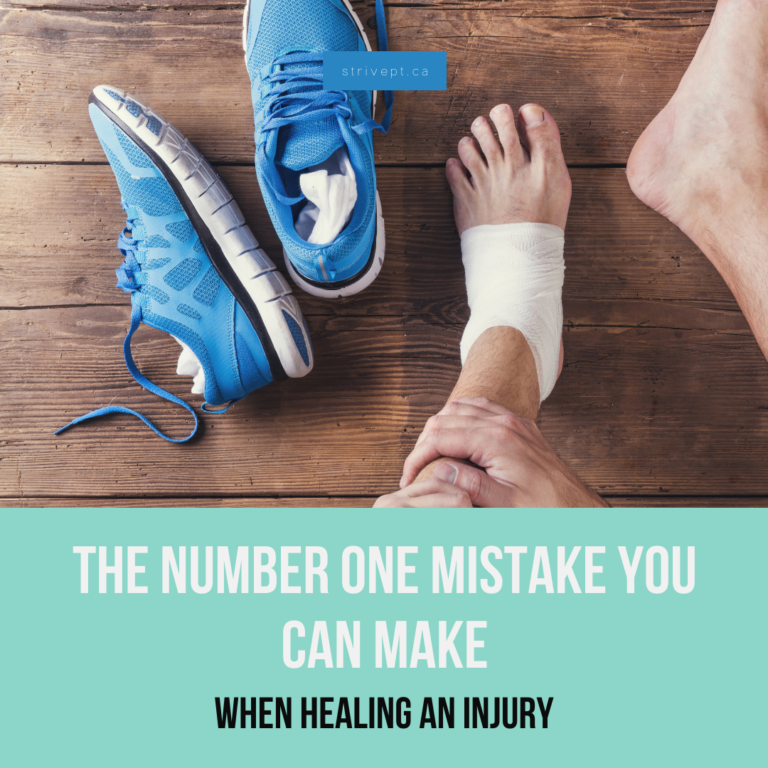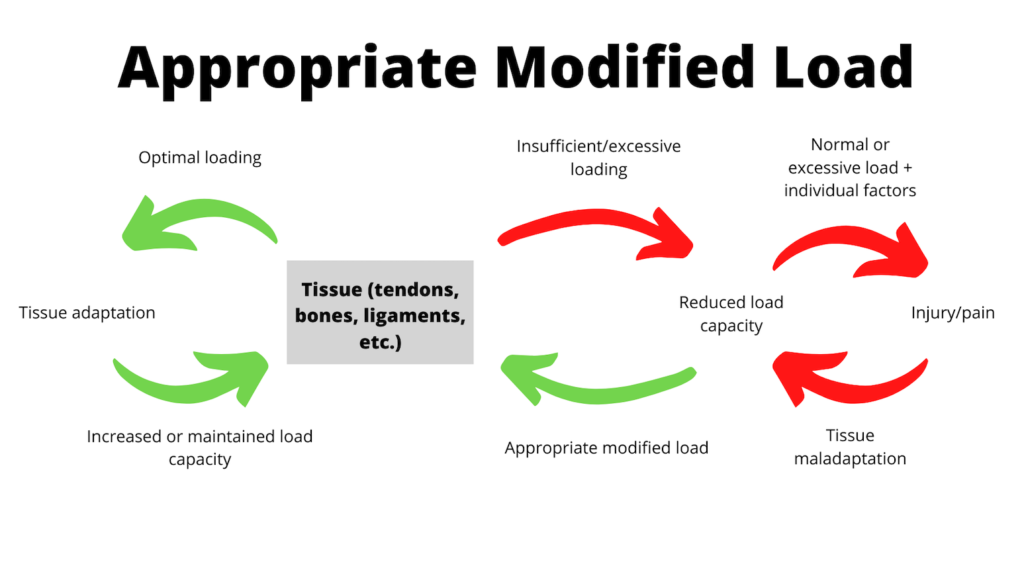
Have you ever experienced a nagging injury that just doesn’t seem to go away? Have you completed rehab (physiotherapy, chiropractic, osteopathy, massage therapy etc.) but still find that injury bothers you months or even years later? If you’ve experienced this, you’re not alone!
Many people go through and complete rehab to fix an injury, only to find their pain or injury returns later!
What gives? Today, we’ll discuss why this happens, and what you can do differently to fix your injury for good!
Why is my injury coming back?
People usually attend rehab to fix a pain or injury that has been impacting their life. Unfortunately, all too often people complete rehab once their pain settles and is no longer an inconvenience to their life, rather than when they are fully better.
While it is great that their pain has decreased enough to not bother them, they may still be missing something important to completely heal their injury.
If they are not experiencing pain, what could that missing piece possibly be?
While every individual and their injury are unique, the missing piece for FULL recovery is often sufficient loading! What the heck does that mean?
Well, when we say loading, we mean the amount of stress we can apply to a structure, body part, or person.
For example, when we squat we are loading, or applying stress to our knees (amongst many other body parts). While you may no longer be experiencing pain throughout your daily life, that doesn’t necessarily mean your body has been loaded enough to completely heal your injury.
People often go through rehab with minimal loading or stress placed on them.
When more stress or load is placed on them in the real world, their pain or injury seems to return.
On the flipside, some people may get enough loading during rehab, but don’t continue to load their body once they feel better.
When they do something that significantly loads their body months later, their pain returns.
The solution?
Make sure you load your body enough during rehab, and even after rehab, so when the real world stress and loading takes place, your body can handle it!
How does loading work?
Our bodies are constantly changing by experiencing and adapting to the stresses or loads that are placed on them.
Too little stress or load, and our body has nothing to make it adapt. Too much stress or load, and our body is unable to keep up and adapt. Thus, we need a balance of just the right amount of stress or load to make our bodies adapt and change for the better! How do we figure out what that amount is? Through simple trial and error.
When loading is not optimized.
Let’s look at an example to really drive home this important concept.
Mr. Smith has been experiencing knee pain for the last 6 months. He decides to go see a physiotherapist to address this pain, so he can go back to living his life normally. Mr. Smith mainly feels pain with lots of walking, going up stairs, and squatting down to pick something up.
His physiotherapist applies heat to his knee, gives him some stretching exercises, and even tells Mr. Smith to do squats into a chair to load his knees. After attending physiotherapy sessions for a few months, Mr. Smith feels great and decides that he no longer needs to come to physiotherapy because his knee is not bothering him anymore.
His physiotherapist is happy that he’s feeling better, and completes his care. But, the story doesn’t end there. Months later, Mr. Smith’s son wants him to play basketball. Mr. Smith has been feeling great, so he figures this should be no problem.
Unfortunately, Mr. Smith plays a couple games of basketball with his son, and his knee pain returns, only this time it’s much worse!
What happened!?
Well, Mr. Smith only attended rehab long enough to decrease his pain with typical everyday activities. He hadn’t considered that doing something more difficult or stressful might trigger his knee pain, even months later!
Mr. Smith also stopped doing the exercises his physiotherapist had given him because he figured he didn’t need to since he didn’t have pain anymore.
Remember, our bodies adapt and change based on the stresses or loads we place on them. Mr. Smith felt better, so he stopped doing the exercises that were loading his knee and forcing it to adapt.
As a result, his knee actually decreased its ability to handle stress and load because it didn’t have any significant stress or load placed on it after rehab ended.
How do I manage load?
Load management refers to the concept of optimizing the amount of load or stress placed on our bodies at any given time. As you can see in the image below, if we load our body too much, its capacity to handle load will decrease. Similarly, if we don’t apply any load to our body, it’s capacity to handle future load will decrease. If our body’s load capacity decreases, not only can an excessive load cause injury, but so can a regular load (something you’re used to doing)! Thus, it is imperative that we load our bodies so that we may continue to adapt and improve load capacity.

If you are experiencing pain or discomfort, it’s important to decrease the load on your body.
For example, if you’re experiencing back pain, you may want to decrease the amount of time you spend bending and lifting.
That being said, we don’t necessarily want to completely remove load. Instead, a good approach is to temporarily decrease the load, and then slowly work back up to greater loads.
For someone with back pain, they may slowly start bending and lifting as part of rehab to improve their back’s capacity to do these activities. If they do not load their back at all, their load capacity may decrease, making it even more painful and difficult to bend and lift.
This concept is also very important for individuals who have taken time off from an activity. These individuals have not been exposed to loading, and so their load capacity has likely decreased. Even if they do not have a current injury or pain, returning to their previous level of activity will put them at an increased risk of injury because of that decreased load capacity.
For example, someone who used to play golf for 6 hours on the weekends may be at increased risk for injury after taking a few months off and then trying to return to the same 6 hours of golfing.
It is crucial that individuals who have taken time off from an activity return to their activity slowly, starting with movements that are low load or stress.
By progressively loading their body, they can slowly increase its load capacity, and return to their regular level of activity with minimal injury risk.
Conclusion
Our bodies are forever changing in response to the loads and demands that are placed on them. Too little or too much load, and our bodies do not adapt.
Just the right amount of load, and our bodies adapt and become stronger. Decrease load when you’re in pain, but remember to slowly and progressively start loading your body again.
When you feel like you’ve finished rehab, continue loading your body to keep it healthy, strong, and pain-free!
Still not sure what to expect with your injury? Call us at 519-895-2020, or use our online booking tool on www.strivept.ca to book an appointment with one of our knowledgeable physiotherapists, and they will be sure to help you understand your injury.
Cheers,
Liam Newlands
Physiotherapist at Strive Physiotherapy and Performance